![]()
![]()
![]()
Use LEFT and RIGHT arrow keys to navigate between flashcards;
Use UP and DOWN arrow keys to flip the card;
H to show hint;
A reads text to speech;
40 Cards in this Set
- Front
- Back
|
European Cities.. To the Industrial Revolution 1 |
European Urban Origins: 1) Greeks 2000 BCE: A. 600 cities; 5,000-300,000; grid pattern. 2) Roman Empire: A. grid pattern; Rome, 1,000,000 people; Southern Spain, Central Italy, Coastal Greece. B. System dependent on roads. C. Extensive hinterland. |
|
|
European Cities.. To the Industrial Revolution 2
|
The Early Middle Ages:
1) Decline of Rome: A. Loss of roads, transportation system. B. Decline of cities in the West. C. Shift to East towards Constantinople. D. Reduction in economic output and trade. 2) Feudalism: A. Rural society. B. Fortified cities and towns. |
|
|
European Cities.. To the Industrial Revolution 3 |
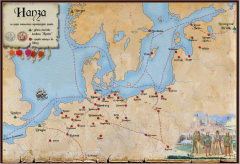
Urban Growth in the 13th-16th centuries: 1) The High Middle Ages: A. Hanseatic League 1356: - Prior guilds (hansa) in Lubeck, Visby, Cologne, etc. a. Colonies such as Peterhof/Novogrod. b. Trade privileges - London 1266 c. Hamburg and Luneburg – Imperial free cities by late 13th century. d. Trade in furs, tar, resin, rye, timber, flax, amber, honey, wheat and metal ores – returned with cloth, manufactured metals, linen, woodcarving, art, armor and weapons. e. Challenged by Dutch, English and Northern Italian city-states. |
|
|
European Cities.. To the Industrial Revolution 4 |
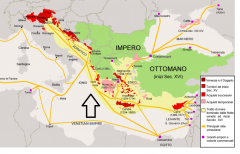
Urban Growth in the 13th-16th centuries: 1) The High Middle Ages: B. The Venetian Empire: - Control of the Mediterranean through Constantinople. a. Colonies throughout the eastern med, Cyprus, Crete, Negroponte, Lepanto, Rhodes, Corfu. b. Trade privileges with the Arab Empires. c. Trade in timber, salt, spices, silks. d. Challenged by the Ottomans and the rise of the Atlantic powers. |
|
|
European Cities.. To the Industrial Revolution 5 |
The Renaissance: 1) The Rise of Italy: A. Northern Italian city-states – Genoa, Milan, Florence. B. Banking – Peruzzis, Guelphs, De’Medicis, the rise of the florin, usury, double entry accounting, bills of exchange, foreign exchange, insurance, credit. C. Rise of patronage for science, humanism, architecture. D. Rediscovery and Translation of Vitruvius: - Marcus Vitruvius Pollio, De Architetura libri decem. |
|
|
European Cities.. To the Industrial Revolution 6 |
The Age of Exploration: 1) Decline of the Mediterranean A. Venice – shift of power to the Papal City. - Return of the Papacy to Rome – Nicholas V. 2) Rise of the Atlantic Powers A. Spain – wealth and absolutism – shift to Madrid. B. Holland (Netherlands 1648) - Amsterdam. C. England (Britain 1707) – London, Glasgow, Liverpool, Bristol. D. France - Paris centralism. |
|
|
European Cities.. To the Industrial Revolution 7
|
The Rise of absolutism:
1) France: A. Louis XIV. 2) Russia: A. Peter the Great – St. Petersburg. 3) Papacy: A. Rise of Rome. 4) England: A. Restoration of the monarchy. |
|
|
European Cities.. To the Industrial Revolution 8 |
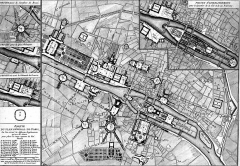
Baroque Cities: 1) Autocracy A. Display of power and wealth. 2) Control A. Control of masses. B. Control of access. 3) Structure A. Polyvia. B. “Wide, straight and beautiful” streets. C. Monuments. |
|
|
European Cities.. The Industrial Revolution 1 |
The Two Revolutions: 1) The Second Agricultural Revolution A. Rise of city specialization for trade. - Increased need for agricultural surplus. - Crop rotation, permanent animal husbandry, mechanization and drainage technology. 2) Industrial Revolution. A. Innovation, capital, entrepreneurs, impetus. B. The cycle of innovation. |
|
|
European Cities.. The Industrial Revolution 2 |
Industrial Growth: 1) Britain – 18th century. A. Midlands – 1750 - coke fields. B. Yorkshire and Lancashire hills – water and wool – textile mills. C. Scottish Midlands – tobacco, sugar, coal, shipbuilding – double-acting steam engine. D. North East England – coal, shipbuilding – railways. E. Coal plus the steam engine = growth. |
|
|
European Cities.. The Industrial Revolution 3 |
The Industrial City: 1) Expansion of existing cities. A. Trade - manufacturing. 2) Creation of new cities in coalfield areas – access to power – water access. 3) New city form. A. Preindustrial core. B. Industrial core. C. Industrial periphery. D. Green belts and garden cities. |
|
|
European Cities.. The Industrial Revolution 4 |
Industrial Urban Morphology: 1) Central Business District – access hub. 2) Industrial Sectors – access lines. 3) Residential Sectors. A. Industrial population – close. B. Managerial population. C. Clerical – close to CBD: - Managerial – high, west, transport options. a. Street cars – horse, electric, trams and buses. |
|
|
European Cities.. The Industrial Revolution 5 |
Early Suburbanizaon: 1) Garden Cities – 1898, Ebenezer Howard. A. Town and Country Planning Association. 2) Green belts – to preserve city green space and prevent sprawl – 1930s. 3) Commuter suburbs – rail and subway up to 30 miles outside major cities. |
|
|
European Cities.. The Industrial Revolution 6 |
WWII: 1) Large scale urban destruction: A. Germany – some cities - 90% of housing. - Cologne, Dresden, Hamburg. B. UK – the Blitz. - London, Coventry, Birmingham, Cardiff, Glasgow. 3. Soviet Union. - Leningrad, Stalingrad, Kiev. |
|
|
North American Cities 1 |
Pre-colonial North America: 1) Evidence of cities: A. Stone ruins. B. Road systems. C. Exotic trade goods. 2) Limits to urbanization: A. Literacy/numeracy. B. Transport. |
|
|
North American Cities 2 |

The Southwest: 1) The Pueblo Cultures 750-1350: A. Chaco Canyon. - Pueblo Bonito, B. Mesa Verde. 2) The decline 1350-1600: A. Warfare. B. Famine. C. Deliberate abandonment. |
|
|
North American Cities 3 |
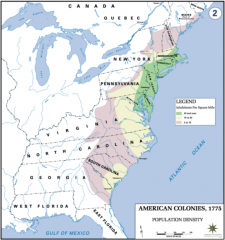
Colonial North America: 1) Gateway cities. 2) City functions. 3) City “systems”. 4) The form of colonial cities: A. The planned city - Philadelphia, Savannah, Charleston. B. The unplanned city - New York, Boston |
|
|
North American Cities 4 |
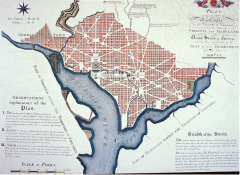
Post Colonial North America: 1) L’Enfant’s baroque city A. Washington DC as expression of power. 2) The Public Land Survey Act of 1796: A. Impact on city form. B. The city as expression of capital. C. The rise of the industrial city. D. New City systems. |
|
|
North American Cities 5 |
Borchert’s Transportation Epochs: 1) Horse and Wagon – 1790-1830. A. Cities on water; Atlantic, lower Great Lakes, Erie Canal, major rivers. B. New York, Boston, Philadelphia, Syracuse, Albany, Buffalo, Baltimore, Savannah, Charleston. 2) Regional Railroad – 1830-1870. A. Rail hubs at existing cities, created hinterlands that linked with steamboat traffic. - Great Lakes, Mississippi, Missouri, Ohio. - Quad cities – New Orleans, Chicago, St Louis, Minneapolis, Memphis, Kansas City, Cleveland, Cincinnati, Detroit, Omaha, Pittsburgh. - Inland cities – Indianapolis, Birmingham, Atlanta, Columbus. |
|
|
North American Cities 6 |
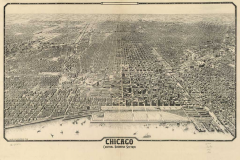
Borchert’s Transportation Epochs: 3) National Railroad 1870-1920 - integrated national rail system. A. River cities stagnated. - St. Louis, Louisville, Cincinnati, Memphis, New Orleans. B. Rail hubs expanded. - Chicago, Atlanta, Dallas-Fort Worth, Minneapolis. C. Concentration of services in large cities. - Architecture. D. Industrial centers expanded. - Pittsburgh, Birmingham, Detroit and small steel towns; Johnstown, Youngstown, Bethlehem, Altoona etc. E. West coast cities. - San Francisco, LA, Seattle, Denver – resources.
|
|
|
North American Cities 7 |
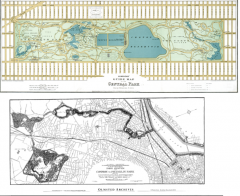
Early planning and suburbs: 1) Andrew Jackson Downing. 2) Frederick Law Olmstead: A. Central Park 1857-1870. B. Riverside Village, Chicago. 3) City Beautiful Movement. 4) Garden Cities: A. Radbury, NJ. B. Chatham Village, PA. 5) Transportation: A. Rail – over and underground. B. Trams – horse, electric, gasoline. |
|
|
North American Cities 8 |
Borchert’s Transportation Epochs: 4) Airplane/Automobile 1920-1960: A. Rise of gas and diesel engines. B. Urban concentration AND dispersal: - Airplane (a) Concentration on air hubs – mirrored existing hierarchy: NY, LA, Chicago; Boston, Detroit, Philadelphia, Pittsburgh, San Francisco; Dallas, Atlanta, and Denver. (b) Increased business travel – multi-location industries – concentration of services –metropolitanisation. - Automobile: (a) Dispersal – permitted residential sprawl, suburbanization of industry and rise of consumer services. |
|
|
Asian Cities 1 |
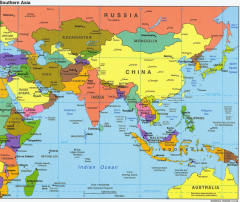
|
|
|
Asian Cities 2 |
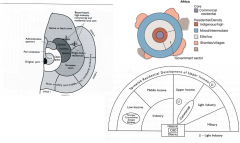
1) Core: A. Purple: Commercial residential. 2) Residential/Density: A. Burn Orange - Indigenous/high. B. Blue - Mixed/intermediate. C. Cream - Elite/low. D. Light Orange - Shanties/villages. |
|
|
Asian Cities 3 |
Urban History: 1) East Asia A. SE Asia – urban core – market and administration. B. Coastal – 19th century contact cities. C. Communist – 20th century planned cites: - Large scale urban resettlement. - Post communist – rapid rural-urban growth. - Problems – pollution - overcrowding. 2. South and SE Asia A. Indigenous – interior – ceremonial. B. Colonial cities – Islamic and European. C. Post colonial – rural-urban migration: - Informal economy, informal housing. |
|
|
Sub-Saharan Africa - Cities 1 |
Sub-Saharan Africa - contemporary and colonial. |
|
|
Sub-Saharan Africa - Cities 2 |
Pre-colonial: 1) West and East Africa - Islamic. A. Administrative/religious core: - Ports and trade centers. - Tomboctou. - Kilwa/Dar es Salaam/Mombasa. B. Residential quarters: - Water. - Mosques. - Markets. - Courtyard houses. 2) Central and South Africa – Indigenous: A. Agricultural and market centers. B. Great Zimbabwe. |
|
|
Sub-Saharan Africa - Cities 3
|
Colonial Cities:
1) Cape Town/Durban/Johannesburg: A. Dutch 1652 (Dutch East India Company) – British 1825 – Gold 1886. 2) Nairobi – 1899 Uganda railway depot – 1904 municipality. 3) Kinshasa – 1881 Stanley – Leopoldville: A. 1898 Portage railway to Matadi. 4) Lagos – Portuguese 1472 – British 1861. 5) Dakar 1456/1536 – Goree Island. 6) Accra – 17th century Danish/1874 British. 7) Abidjan - 1898. |
|
|
Sub-Saharan Africa - Cities 4
|
Rapid Urban Development:
1) Main problem for African cities is rapid urban development without rapid industrialization. 2) Population increases. 3) Service needs increase. 4) Tax base is stagnant. 5) Result is environmental, social and structural problems. |
|
|
Sub-Saharan Africa - Cities 5 |
Informal Economy: 1) High rates of rural-urban migration mean rapid increase in population. 2) Slow rate of industrial and public sector growth means not enough “formal” jobs. 3) Low average income means limited market for traditional commercial goods. 4) Growth of the “informal” sector. 5) Retailing, services, salvage, food service, transportation. |
|
|
Sub-Saharan Africa - Cities 6 |
Informal Housing: 1) Informal economy leads to low income security – lack of access to regular housing – result is informal housing. 2) Unregulated, insecure (often temporary) no taxes, no services. 3) Located on land with no value – steep hillslopes, industrial areas, river valleys, marshes, landfills. 4) Constructed with available materials – corrugated tin, cardboard, sheet plastic, concrete block – no connection to electricity, sewer and water lines – no roads, no schools, no police, fire, garbage collection etc. |
|
|
Latin American Cities 1
|
Latin American Cities:
1) Colonial history: A. The Laws of the Indies. B. Coastal vs. Central cities. C. Rio, Sao Paulo, Bahia, Santiago, Lima, Asuncion, Montevideo, Caracas, Quito, Bogota, La Paz. - City functions: Administration, extraction and trade. D. City system problem: - No connected rail network. - No coherent road network until 1950s. - Only solved by air transport. |
|
|
Latin American Cities 2 |

|
|
|
Latin American Cities 3 |
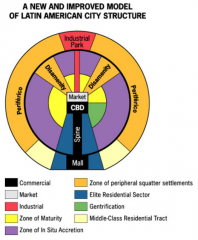
The Griffin/ Ford Model: 1) Black: Commercial. 2) White: Market. 3) Red: Industrial. 4) Yellow: Zone of Maturity. 5) Purple: Zone of In Situ Accretion. 6) Orange: Zone of peripheral squatter settlements. 7) Blue: Elite residential sector. 8) Green: Gentrification. 9) Cream: Middle Class Residential Tract.
|
|
|
Latin American Cities 4 |
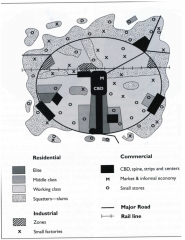
Crowley’s Model: 1) Residential: A. Elite. B. Middle Class. C. Working Class. D. Squatters - slums. 2) Industrial: A. Zones. B. Small factories. 3) Commercial: A. CBD, spine, strips, and centers. B. Market & informal economy. C. Small stores. 4) Major Road. 5) Rail line. |
|
|
Cities of Middle East and SW Asia 1 |
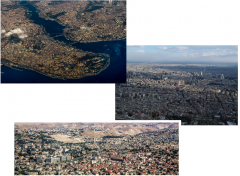
|
|
|
Cities of Middle East and SW Asia 2 |
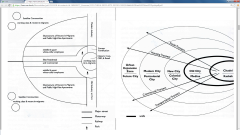
1) Citadel - Kasbah. 2) Old City - Medina. 3) New City - Colonial City. 4) Modern City - Post colonial city. 5) Urban Expansion Zone - Future city. |
|
|
Cities of Middle East and SW Asia 3 |
Indigenous: 1) Summerian – Hittite etc. A. Ur, Uruk, Babylon, Damascus (2000 BCE) etc. 2) Phoenician: A. Byblos, Sydon, Tyre, Tingis (Tangiers), Carthage, Cyrene. 3) Greek: A. Cyrene, Ephesus, Miletus, Tarsus, Byzantium. 4) Roman: A. The Decapolis, Timgad, Lepis Magna etc. ² 5) Byzantine: A. No new city formation. 6) Islamic (Umayyad, Abbasid, Fatimid, Ottoman): A. Baghdad (762). B. Cairo (969). |
|
|
Cities of Middle East and SW Asia 4 |
Civilization and Systems: 1) Fertile Crescent: A. City states – civilization – technology. B. Environmental change. 2) Trade: A. Mediterranean. B. Black Sea. C. Overland routes. D. City Form: - Citadel, market mosque, madrassa, residential quarters. |
|
|
Cities of Middle East and SW Asia 5 |
Modern Cities: 1) Colonial A. Ottoman – 15th-19th century. B. European – 19th -20th century: - North Africa – France, Italy, Britain. - Levant – France, Britain. 2) Oil and Economic Growth A. Saudi Arabia. B. Gulf States. - Water. - Enclaves. - Architectural and Commercial excess. |

